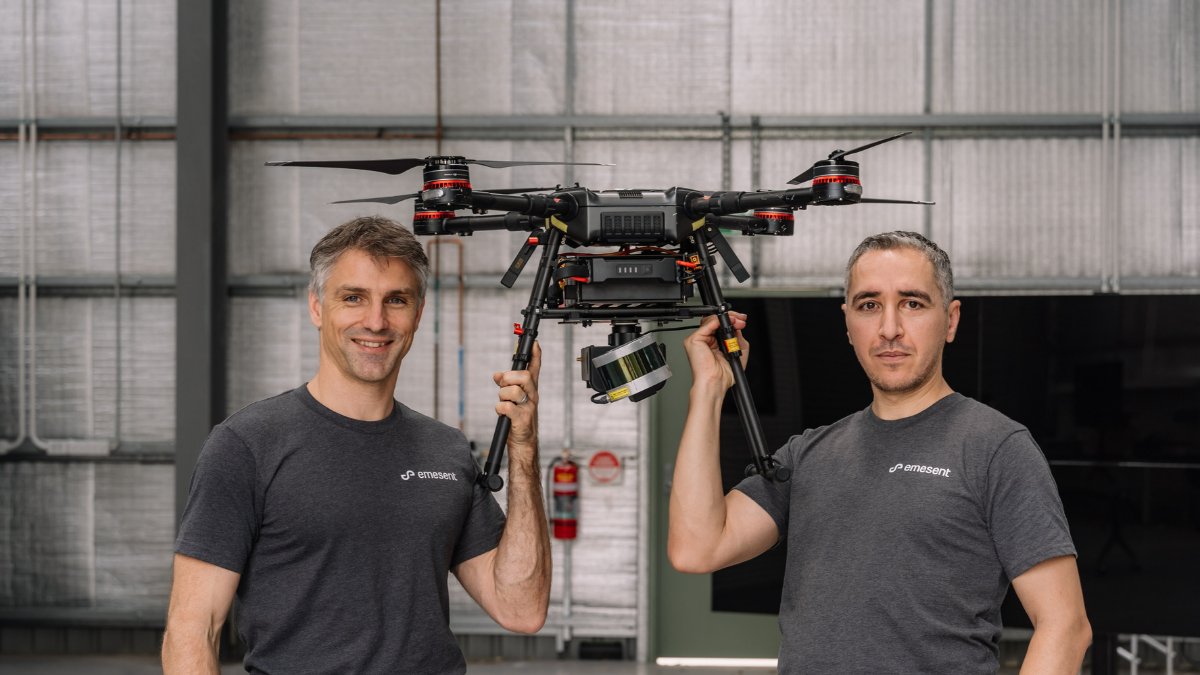Drone company Emesent is taking pilotless aircraft to new heights, with autonomous technology allowing miners to access unchartered spaces, and defence forces to survey unnoticed.
After working together with the CSIRO on projects involving large organisations such as Boeing and Queensland Government, Founders Stefan Hrabar and Farid Kendoul used a combination of SLAM technologies and 3D lasers to create a drone which can fly completely autonomously and in GPS-denied areas.
This model was the basis for the creation of their company Emesent, which was developed within the CSIRO’s entrepreneurial accelerator. After joining the accelerator in 2016, Dr Hrabar and Dr Kendoul worked to build their business.
“Farid and I don’t have business backgrounds, so we were learning everything from scratch,” says Dr Hrabar. “We learned a lot through the couple of years we had in the CSIRO accelerator, but the biggest challenges were working out how to set up distribution channels and organise the production of the units themselves.”
Emesent’s autonomous hero product, the Hovermap, is the most widely adopted drone solution in the mining sector, being used across 60 mine sites and covering more than 4,000 autonomous underground flights over the course of two years.
Dr Hrabar attributes this success to the connection between the company and its customers.
“A major part of our growth has been done while talking to customers, working out what their problems are and how we are going to solve them,” he says. “We’ve had really good traction with customers to the point that now we’re being used by most of the big mining companies around the world.”
After putting in the time to research where the technology would be best suited, Emesent focussed on targeting two key markets: Telco tower inspections and underground mining.
“We identified that it was very difficult for somebody to climb up a tower and go to see what’s going on,” said Dr Hrabar. “And then for underground mining, it made a lot of sense because there are so many areas that humans can’t access safely.”
“When we started speaking to mining surveyors for the first time, I didn’t know a thing about underground mining. The surveyor explained to us what a ‘stope’ was, which is a big hole underground which is formed after blasting, and explained to us how dangerous it has been to send people into these areas, how long it takes and how poor the data is that they capture.”
When test driving the Hovermap with the mining industry, Dr Hrabar and Dr Kendoul went to a mine in Queensland with a skilled pilot to see how much data the drone would be able to capture.
“After just a few minutes of flying, seeing the information that was sent back to us from the drone was extraordinary,” he said. “It was obvious from that first scan that this was going to be a massive, massive success for mining use.”
Following this test flight, the team added autonomy to the drone, meaning it could fly even further in automated flight, and no longer needed a skilled pilot.
In-Q-Tel Funding
Emesent has recently received funding from In-Q-Tel, the investment arm of the US intelligence agency the CIA. This funding is intended to help Emesent’s expansion into new industries including defence, security, and emergency response.
“The Hovermap doesn’t have a GPS,” Dr Hrabar explains. “This is appealing for defence, because usual drones have GPS which can be jammed by the enemy.”
DARPA Challenge
Last year Emesent were accepted into the DARPA Subterranean challenge to deploy a team of autonomous robots to explore an underground mine, find items of interest and accurately report the location of the items.
Dr Hrabar says it is challenges such as this that assist the team in strengthening their technology to assist defence and search and rescue in responding in an emergency.
Keep up to date with our stories on LinkedIn, Twitter, Facebook and Instagram.


